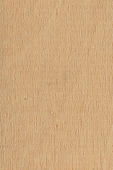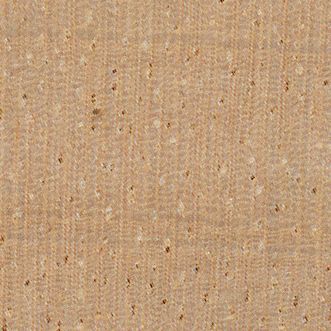
AMAPA (Parahancornia amapa)
Trade Name
Amapa
Scientific Name
Parahancornia amapa (Huber) Ducke
Family
APOCYNACEAE
Common Names
Amapa (Brazil); Amapá-Amargoso (Brazil); Amapá-Amargo (Brazil); Amapá (Brazil)
Scientific Name Synonyms
Hancornia amapa Huber
Description Of The Tree
Botanical Description
It is a tall tree, sometimes over 35 m long, with diameters occasionally up to 90 cm. This tree is used as a source of medicine, and it is a minor source of gutta percha. It presents abundant latex.
Natural Habitat
Parahancornia amapa is reported to grow in humid sites of terra firme forests, always close to rivers and streams.
Natural Distribution
It is found in the Amazon basin. In Brazil it is reported in Manaus and Para states.
Wood Identification
Anatomic Description Of Wood
Wood diffuse porous. Vessels solitary and in short radial multiples. Tangential diameter of vessel lumina 100 to 150 micras (small). Vessels per mm2 6 to 10 (medium). Simple perforation plates. Vessel-ray pits similar to intervessel pits in size and shape. Inte Apotracheal axial parenchyma diffuse and/or diffuse in aggregates. Prismatic crystals in non-chambered axial parenchyma cells. Prismatic crystals in chambered axial parenchyma cells and/or in fibers. 5 to 8 cells per parenchyma strand. 4 to 10 rays per mm (medium). Rays commonly 2 seriate. Prismatic crystals in radial alignment in procumbent ray cells (chambered cells). Homogeneous rays and/or sub-homogeneous rays (all ray cells procumbent). Fibers with distinctly bordered pits.
-
 Wood Macro Photo Tangential Plane
Wood Macro Photo Tangential Plane
-
 Wood Micro Photo Of Transversal Section
Wood Micro Photo Of Transversal Section
Availability
Cites Status
Unrestricted
General Wood Description
Color
The color of the heartwood is usually cream white to light brown.
Grain
The grain is straight.
Texture
The wood has a fine texture.
Natural Durability
Natural durability of P. amapa is reported to be poor, it can be attacked by fungi, termites and dry wood insects.
Natural durability index (1= Very high durability, 7=Vey low durability)
5
Resistance To Impregnation
Heartwood is considered to be moderately difficult to preserve.
Wood Physical Properties
Basic Density or Specific Gravity (O.D. weight/vol. green) (g/cm³)
0.57
Air-dry Density (Weight and volume at 12%MC) (g/cm³)
0.63
Total shrinkage Tangential (Saturated to 0%MC) (%)
8.1
Total shrinkage Radial (Saturated to 0%MC) (%)
4.6
Drying Defects
Ease of Drying: It is difficult to air season. Drying Defects: When dried at a fast to moderate rate it develops moderate crook and surface checking. Risk of casehardening in thick pieces. Kiln Schedules: This species must be dried slowly.
Dimensional stability ratio (Total Tangential Shrinkage %/Total Radial Shrinkage %)
1.8
Wood Chemical Properties
Wood Mechanical Properties
Bending Strength (MOR),12%MC (kgf/cm²)
723
Stiffness (MOE) 12%MC (kgf/cm²)
108014
Compression parallel to fiber 12%MC (kgf/cm²)
448
Workability
Sawing
Wood of this species is easy to cut.
Rotary Veneer Cutting
This species is interesting for peeling.
Sliced Veneer
This species is interesting for peeling.
Blunting Effect
It is considered to have a slight blunting effect on the cutting elements.
Machining
This species is easy to machine.
Planing
It is easy to plane.
Nailing
It has a mediocre holding of nails.
Gluing
This species is easy to glue.
Finishing
It is easy to finish.
Polishing
Polishing of this species is reportedly easy.
REFERENCED USES
End Uses Summary
HOUSING GENERAL, beams, boards, panelling, fittings, FURNITURE AND CABINETS, common furniture, PLYWOOD AND VENEER, cores, common veneer, PACKING, light packing, OTHER AND MUSICAL INSTRUMENTS, handicrafts, matches, moldings
General Housing
- 10 - Silica in Timbers
Beams
- 11 - Prospect: The wood database
Boards
- 13 - Dry kiln schedules for commercial woods. Temperate and tropical. Section III. Latin American (Mexico, Central, and South America) Woods–Conventional Temperatures
Paneling
- 18 - W3TROPICOS Missouri Botanical Garden
Fittings
- 19 - Silica in Timbers
Furniture Cabinets
- 21 - Tropical timbers of the world. Part III-Southeast Asian and Oceanian Species.
Furniture, Common
- 23 - Handbook of Hardwoods
Panels, Veneers
- 25 - Directory of Timber Trade Malaysia
Cores
- 27 - Embassy of Brazil in Japan
Common Veneer
- 29 - Embassy of Ecuador in Japan
Packing
- 45 - Recopilación y Análisis de Estudios Tecnológicos de Maderas Peruanas
Light Packing
- 46 - ECUADOR, Inventario y Aprovechamiento de los Bosques del Sur Ecuatoriano
Handcraft
- 66 - Maderas latinoamericanas. VII. Caracteristicas anatomicas. propiedades fisicomecanicas, de secado, y tratabilidad de la madera juvenil de Cordia alliodora (Ruiz & Pav. Oken.)
Matches
- 71 - Proprietes physiques et mecaniques des bois tropicaux, premier supplement
Molding
- 79 - Padronização da Nomenclatura Comercial Brasileira das Madeiras Tropicais Amazônicas, Sugestão
Please Provide Information To View Producer Information